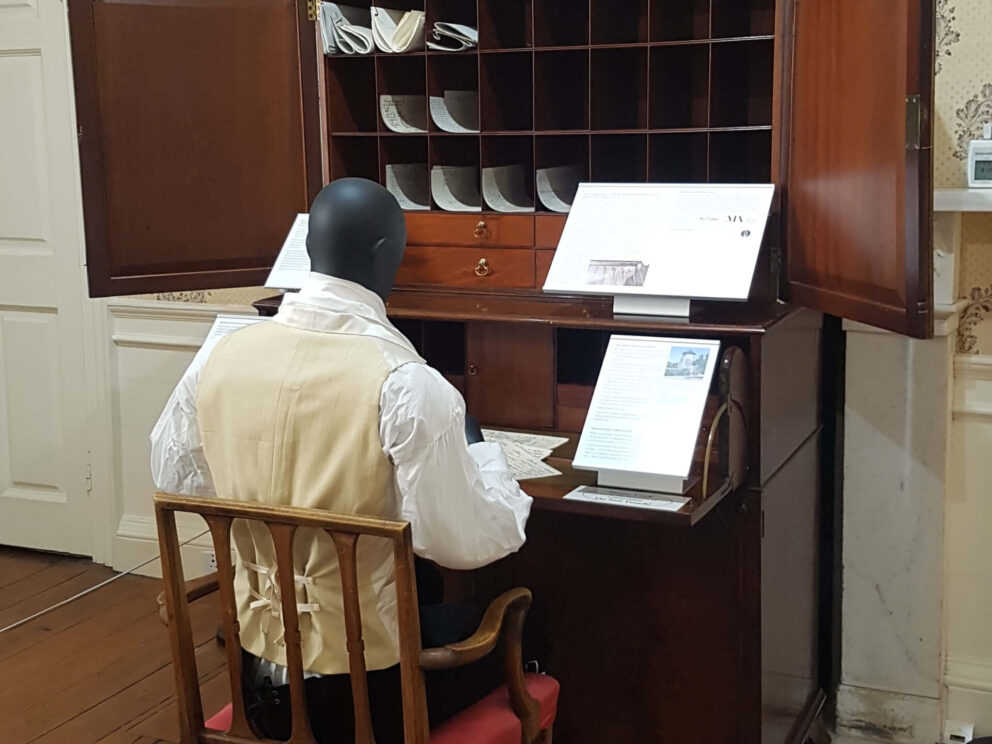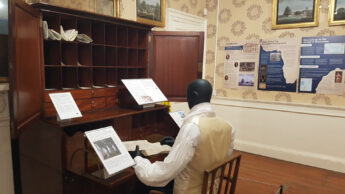The Paxton Secretaire

One of the proudest moments of 2022 was the return of a key piece of furniture to Paxton House – The Paxton Secretaire. Lost to Paxton since the 1970s, this nationally important piece of furniture is now reunited with the Palladian interiors for which it was designed.

The Paxton Secretaire is a writing desk with drawers, commissioned for the house in the 1770s, part of a nationally Recognised collection of furniture by the most celebrated cabinet maker of the eighteenth century, Thomas Chippendale. The Secretaire was sold from Paxton House in 1970 and was shipped to the USA where it remained in private collections. After the Secretaire came up for sale in New York, the Paxton Trust launched a campaign to re-acquire, conserve and transport it back home.
 The funds were raised over three months, with generous support from the Museums Association’s Beecroft Bequest, the Chippendale Society, the Art Fund, the National Fund for Acquisitions administered by National Museums Scotland and private donations.
The funds were raised over three months, with generous support from the Museums Association’s Beecroft Bequest, the Chippendale Society, the Art Fund, the National Fund for Acquisitions administered by National Museums Scotland and private donations.
The Paxton Secretaire was commissioned by Ninian Home and his wife Penelope for the house they had acquired in Scotland from Ninian’s cousin, Patrick. Before its sale, the Secretaire was part of several suites of mahogany furniture of an elegant, restrained style, dubbed The Paxton Style, commissioned for the house from Thomas Chippendale, Haig & Co. and his son of the same name. The Secretaire was made c.1775-9 of the finest ‘flame’ mahogany, with its original handles and pigeonholes for filing documents. Remarkably, the Secretaire retains, not just the marbled paper drawer linings characteristic of Chippendale, but also part of the baize dust covers which originally protected the contents of the drawers. The National and International significance of the Chippendale furniture collection at Paxton House was confirmed at the inception of the Paxton House Trust by support from the National Heritage Memorial Fund and by its designation, in 2017, as the only Recognised collection of Chippendale and Trotter furniture in Scotland by Museums Galleries Scotland on behalf of the Scottish Government.
Ninian Home was the owner of plantations in the Caribbean and both he, and his successor, George Home, would have used the Secretaire in the management of their estates, which were worked by around 250 enslaved people. The furnishings of Paxton House originally included a piece of writing furniture in nearly every room, an arrangement more commonly associated with Georgian houses in the Caribbean or the East Coast of America where, unlike Britain, there is little division between domestic and office spaces. Ninian Home lived most of his life primarily in the Americas and the Caribbean before his murder in an uprising in Grenada in 1795. The Secretaire, like other pieces at Paxton House are a part, not just of the history of interior design and furnishing in Britain, and Scotland in particular, but also of the history of slavery and its connections with British interiors.
Dr Fiona Salvesen Murrell, Consultant Curator at Paxton House, led the campaign, commenting, “We are thrilled to have been able to acquire the Paxton Secretaire which was part of the Home family’s collection at Paxton House for 200 years before its sale. In its own right, it is an incredibly important piece of British design with so much to tell us about life in Britain and in the Caribbean in the eighteenth century. “
The Paxton Secretaire is now on display in the Morning Room at Paxton House as part of a new permanent exhibition, Sugar & Slavery. Visit the exhibition as part of a house tour or, unguided, on Tuesdays and Fridays between 10am and 2pm until the end of October.
Explore our Sugar & Slavery online trail.


